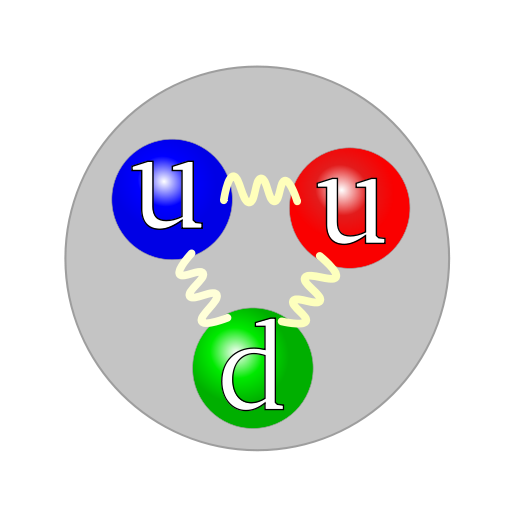Researchers: Proton mass mainly comes from sources other than quarks

proton showing quark structure/ Arpad Horvath
Proton: stable subatomic particle that has a positive charge equal in magnitude to a unit of electron charge and a rest mass of 1.67262 × 10−27 kg, which is 1,836 times the mass of an electron. (Britannica)
Only 9% of the proton’s mass comes from its quarks:
The rest of the proton’s mass comes from complicated effects occurring inside the particle, researchers report in the Nov. 23 Physical Review Letters.
…
Instead, most of the proton’s 938 million electron volts of mass is due to complexities of quantum chromodynamics, or QCD, the theory which accounts for the churning of particles within the proton. Emily Conover, “Physicists finally calculated where the proton’s mass comes from” at Science News
These results provide figures for what’s long been suspected.
Seems like it’s a quantum world after all.
Follow UD News at Twitter!
See also: Proton decay findings provide less support now for grand unification theory (GUT) for universe
and
Particle physicist: Science is suffering from “baked in” bias (features Sabine Hossenfelder post)
Copyright © 2018 Uncommon Descent . This Feed is for personal non-commercial use only. If you are not reading this material in your news aggregator, the site you are looking at is guilty of copyright infringement UNLESS EXPLICIT PERMISSION OTHERWISE HAS BEEN GIVEN. Please contact legal@uncommondescent.com so we can take legal action immediately.
Plugin by Taragana
Michael J. Behe's Blog
- Michael J. Behe's profile
- 219 followers



